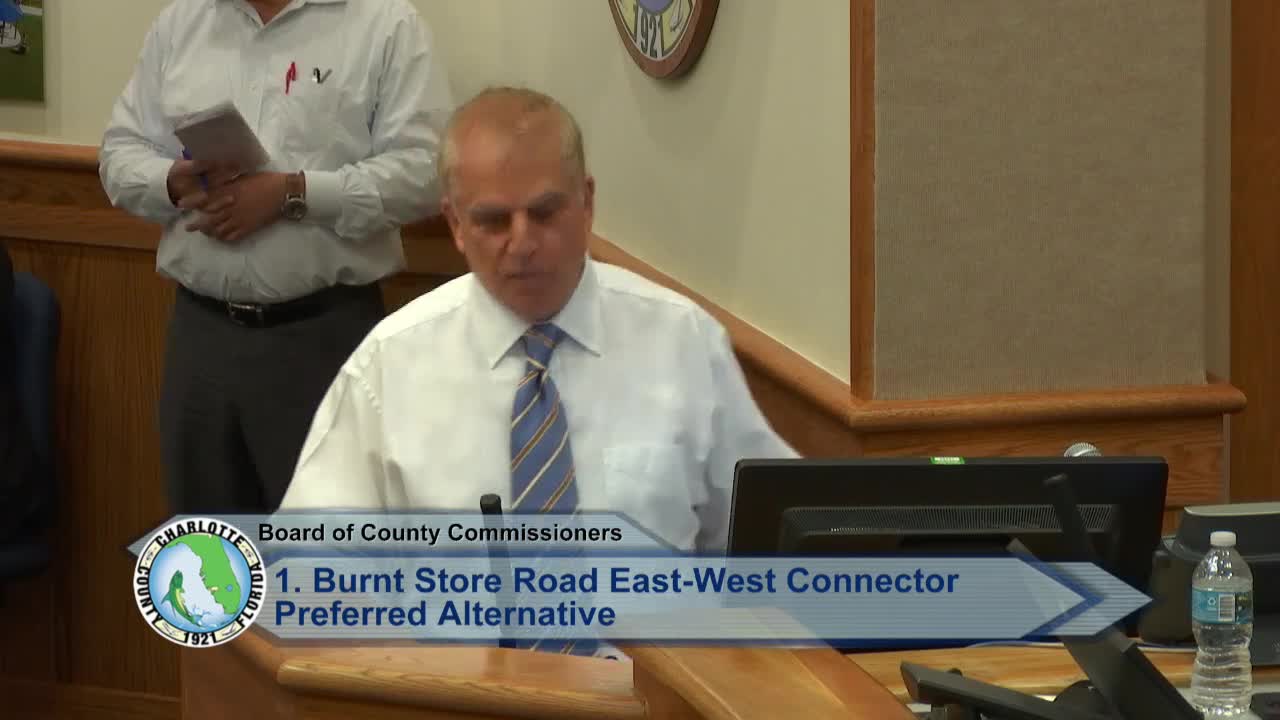Future of Transportation Hangs on East West Connector Plans
September 24, 2024 | Charlotte County, Florida
This article was created by AI summarizing key points discussed. AI makes mistakes, so for full details and context, please refer to the video of the full meeting. Please report any errors so we can fix them. Report an error »

In a recent government meeting, officials discussed the Transportation Burnstow Road East West Connector Study, which aims to address future traffic capacity needs in the region. The study encompasses an area north of Zimmer Road, east of Bernstow Road, south of Notre Dame Boulevard, and west of the intersection with ES 41 and Greengulf Boulevard.
Key objectives of the study include preparing a traffic modeling analysis and conducting a preliminary engineering study to establish a roadway alignment for an east-west corridor. The proposed connector is expected to facilitate traffic flow between Burnstow Road and US 41, with plans to construct a new two-lane roadway by 2030-2035 and widen it to four lanes by 2045, contingent on development rates.
During the meeting, officials debated the potential need for future expansion to six lanes. Concerns were raised about whether the current planning adequately anticipates future traffic demands, especially given the expected growth in South County. Some commissioners emphasized the importance of acquiring sufficient right-of-way now to allow for future expansion, arguing that the connector could become a critical route as development increases.
Public Works Director Johnny Elias acknowledged the concerns but reiterated that current modeling does not indicate a need for six lanes by 2045. He emphasized the balance between planning for future needs and managing costs, noting that the transportation plan currently proposes a two-lane road with the potential for future expansion.
The meeting also covered environmental assessments related to the project, including potential impacts on wetlands and protected species. Four alternatives for the connector were presented, each with varying impacts on residential properties and traffic flow. The alternatives range from a controlled access route with limited driveways to options that would require multiple residential relocations.
As the discussion progressed, officials recognized the necessity of planning for future growth while also addressing immediate transportation needs. The outcome of this study and subsequent decisions will play a crucial role in shaping the region's infrastructure in the coming decades.
Key objectives of the study include preparing a traffic modeling analysis and conducting a preliminary engineering study to establish a roadway alignment for an east-west corridor. The proposed connector is expected to facilitate traffic flow between Burnstow Road and US 41, with plans to construct a new two-lane roadway by 2030-2035 and widen it to four lanes by 2045, contingent on development rates.
During the meeting, officials debated the potential need for future expansion to six lanes. Concerns were raised about whether the current planning adequately anticipates future traffic demands, especially given the expected growth in South County. Some commissioners emphasized the importance of acquiring sufficient right-of-way now to allow for future expansion, arguing that the connector could become a critical route as development increases.
Public Works Director Johnny Elias acknowledged the concerns but reiterated that current modeling does not indicate a need for six lanes by 2045. He emphasized the balance between planning for future needs and managing costs, noting that the transportation plan currently proposes a two-lane road with the potential for future expansion.
The meeting also covered environmental assessments related to the project, including potential impacts on wetlands and protected species. Four alternatives for the connector were presented, each with varying impacts on residential properties and traffic flow. The alternatives range from a controlled access route with limited driveways to options that would require multiple residential relocations.
As the discussion progressed, officials recognized the necessity of planning for future growth while also addressing immediate transportation needs. The outcome of this study and subsequent decisions will play a crucial role in shaping the region's infrastructure in the coming decades.
View full meeting
This article is based on a recent meeting—watch the full video and explore the complete transcript for deeper insights into the discussion.
View full meeting